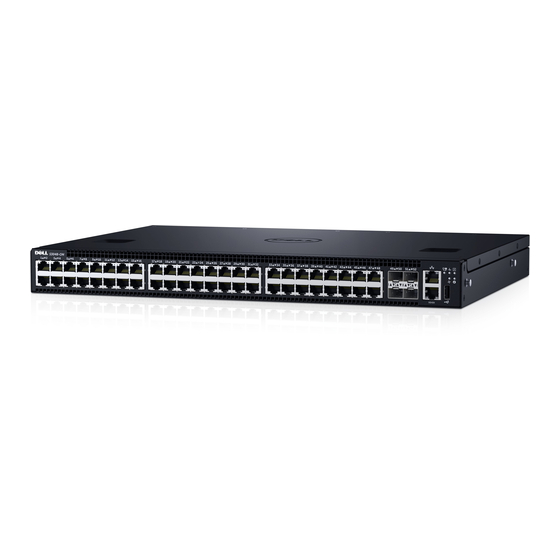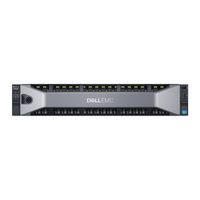
Dell S3048-ON Manuals
Manuals and User Guides for Dell S3048-ON. We have 3 Dell S3048-ON manuals available for free PDF download: Configuration Manual, Deployment Manual, Troubleshooting Manual
Dell S3048-ON Configuration Manual (1036 pages)
Table of Contents
-
-
Audience33
-
Conventions33
-
-
-
4 Management
60-
-
802.1X86
-
-
-
-
IP Prefix Lists126
-
ACL Resequencing130
-
Route Maps132
-
-
How BFD Works138
-
BFD Sessions140
-
Configure BFD143
-
-
-
-
Peer Groups170
-
Route Reflectors170
-
BGP Attributes171
-
Weight173
-
Local Preference173
-
Origin175
-
AS Path176
-
Next Hop176
-
-
Enabling BGP183
-
Router Bgp197
-
Shutdown All214
-
-
Debugging BGP216
-
Capturing Pdus218
-
PDU Counters219
-
-
CAM Allocation226
-
Test CAM Usage228
-
View CAM Usage230
-
CAM Optimization230
-
-
-
-
-
Ip Dhcp Server246
-
Show Config246
-
-
Host Address248
-
-
-
-
Ring Status272
-
-
-
-
Hitless Behavior291
-
Graceful Restart291
-
System Log292
-
-
-
IGMP Version 2293
-
IGMP Version 3295
-
-
Configure IGMP298
-
Adjusting Timers300
-
IGMP Snooping304
-
-
19 Interfaces
316-
Interface Types317
-
Show Interfaces317
-
VLAN Interfaces331
-
Null Interfaces332
-
-
Link Dampening345
-
Port-Pipes350
-
Dynamic Counters356
-
21 Ipv4 Routing
360-
IP Addresses361
-
Arp367
-
Icmp371
-
UDP Helper371
-
-
22 Ipv6 Routing
376-
-
Ipv6 Headers377
-
Addressing381
-
Icmpv6383
-
-
SNMP over Ipv6390
-
-
-
IS-IS Addressing397
-
-
Transition Mode398
-
Adjacencies399
-
-
Graceful Restart399
-
Timers399
-
-
-
25 Layer 2
435-
-
NIC Teaming440
-
-
Optional Tlvs450
-
Management Tlvs450
-
-
Configure LLDP456
-
Enabling LLDP457
-
Advertising Tlvs458
-
Debugging LLDP465
-
-
Anycast RP475
-
Enable MSDP480
-
Debugging MSDP489
-
-
-
-
-
Overview577
-
Implementing PBR578
-
-
-
Enable PIM-SM589
-
-
Enabling PIM-SSM594
-
-
Port Monitoring599
Advertisement
Dell S3048-ON Deployment Manual (78 pages)
EMC Networking with Isilon Front-End Deployment and Best Practices Guide
Table of Contents
-
3 Management
10 -
8 Validation
58 -
-
Validation74
Advertisement
Advertisement


